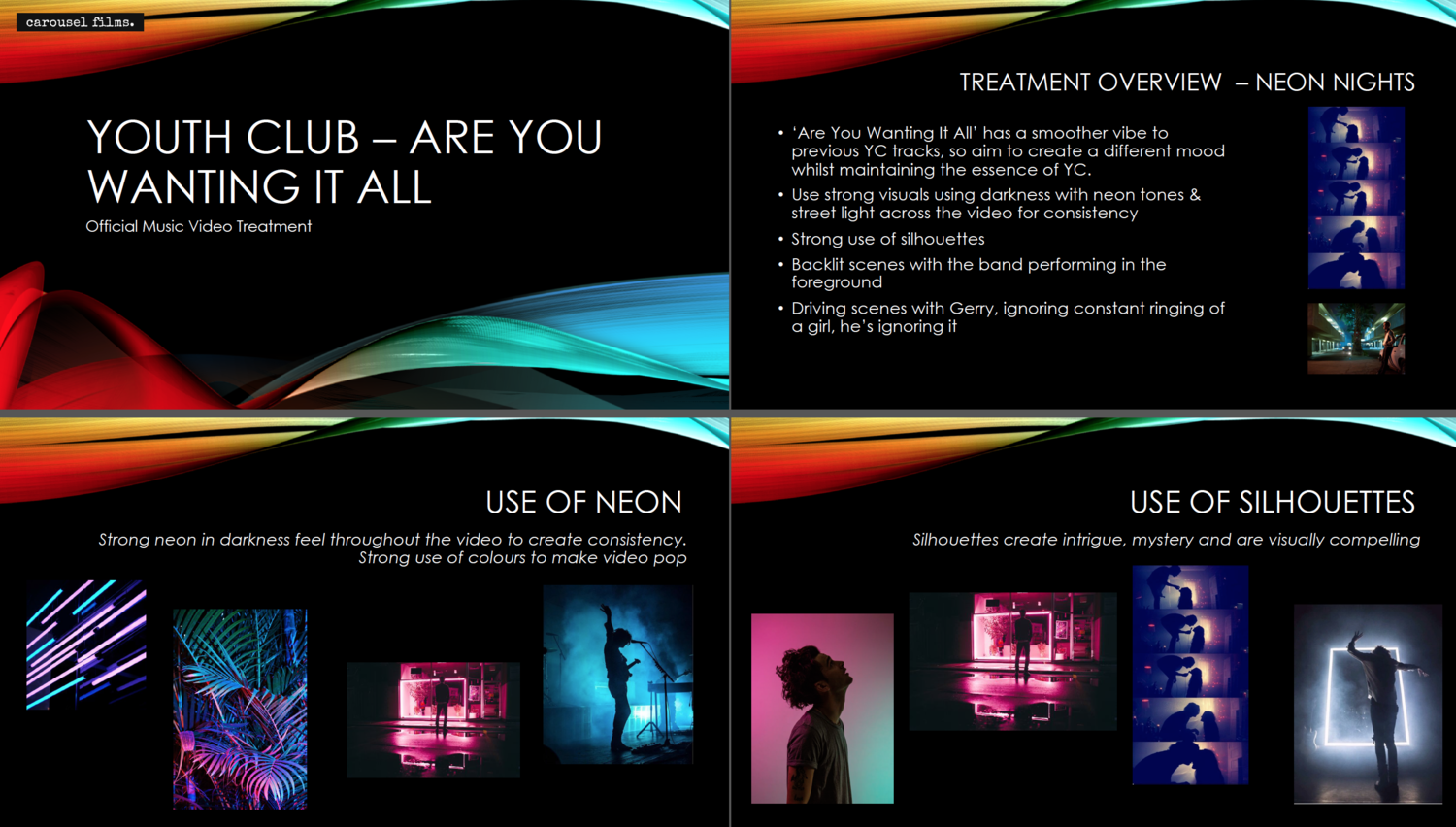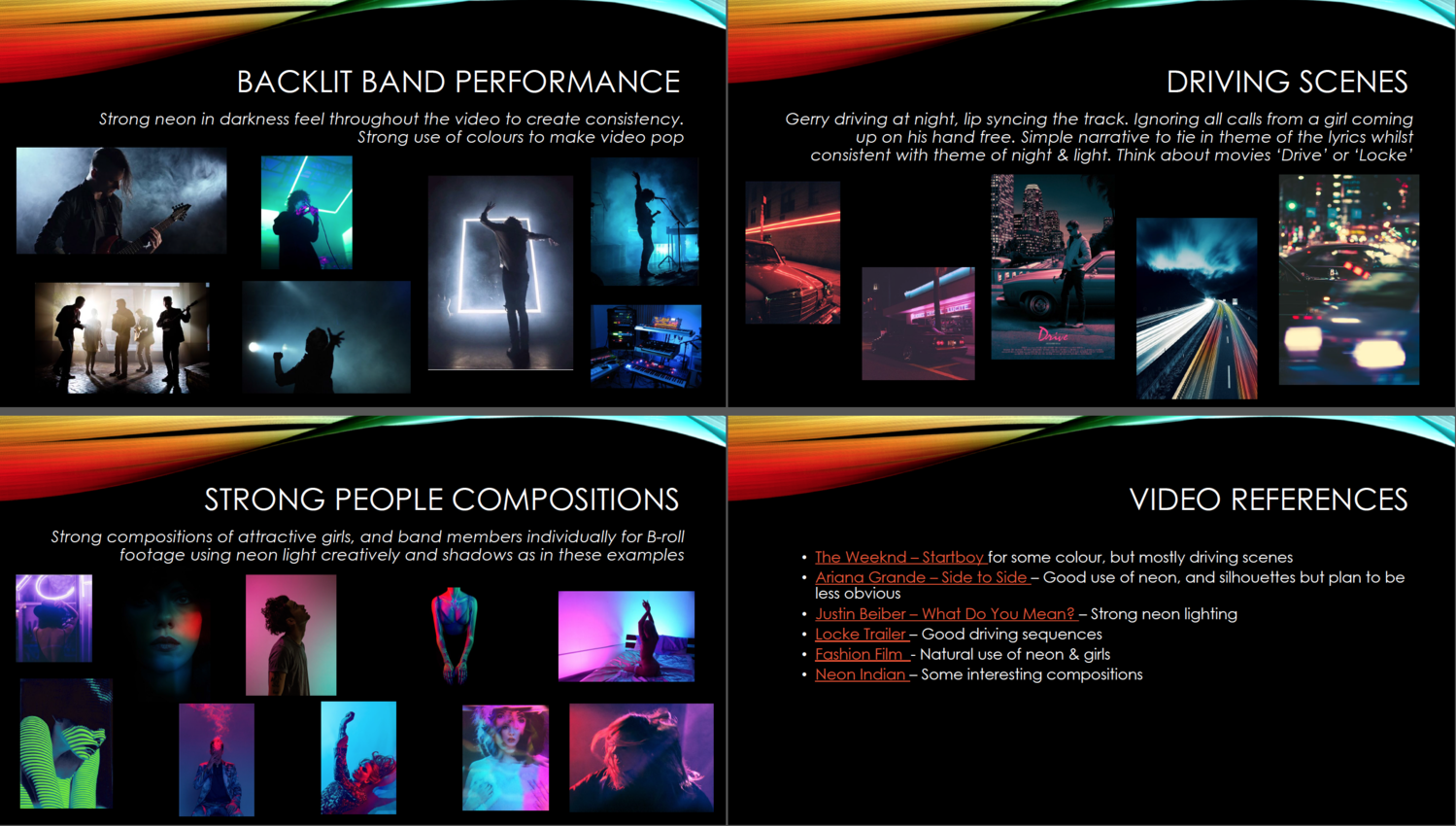With no audio to worry about, and just around four minutes to fill, music video production is one of the most accessible ways for cinematographers and videographers to broaden their creative horizons and be paid. To secure music video work, your prospective client will expect a summary of your idea first, which is known as a “treatment.” This is a guide to what you should include, and how to make your treatments stand out for the crowd.
Know Your Client
So you have opened up a dialog with an artist looking for a music video. This could be by contacting them directly through social media, through word of mouth, or via a website designed to bring creatives and artists together like Creative Commissions. Once contact has been made, this is the time that a treatment must be put together. Even the biggest artists' videos from Bruno Mars to Adele will start off with a video treatment.
We’ll get to the content of the treatment shortly, but it will all stem from an inspiring idea that will relate to your client’s project. I keep a list of music video ideas up to date in my Omnifocus app that I add to whenever inspiration strikes, wherever that may be. For me, this often comes from watching great cinema and TV.
Do your homework on the artist if you don’t know them already, watch their past videos, listen to their music, find out who inspires them, and then watch their videos. This background work will help you decide which idea to pluck out of your idea bank. An urban rap artist isn’t likely to be impressed with a treatment referencing a Dolly Parton video, so it’s important to shape your idea to the client.
If the artist is looking for a video that features a lot of VFX which is out of your skill set, you must lay the ground work before with a collaborator to cover this, otherwise you may be setting yourself up for failure. Writing every treatment takes time, and time is money for full time creatives. While you must be prepared that some of your treatments will fail, you must pick and choose the projects you feel you can do an awesome job for. Rap music isn’t something I listen to often, it’s not a genre I’d feel confident in shooting for given my limited exposure. Therefore I don’t often write treatment for rap often, I’d rather spend my time writing treatment for indie, rock, and pop.

Know Your Industry
The problem with video referencing, particularly music videos, is that the components of the video are not often tagged for search engines. To show what I mean here, let’s take a look at Black Keys – The Weight of Love. It’s a gorgeous narrative video about a trippy, alternative female cult. Now, try searching "female cult music video" in YouTube and the Black Keys’ video won’t be anywhere in sight.
This means you have to lean on your own knowledge of references, and the only way to build this up is to take a little time out of your week to watch new video content. Vimeo Staff Picks are always a great place to start. Take notes of the cinematography that inspires you, and use this as the bedrock to your referencing. This turns your downtime in front of the TV into important research for potential projects.
Structure
My treatments follow the same format, and having a template prepared is the easiest way to speed the process up. I use PowerPoint and export to PDF when sharing. Each treatment includes a front page with the artist’s name, song title, and my logo.
The second page is a summary (or elevator pitch) of the idea for the music video, broken down into short bullet points along with key visual references which are often screenshots from referenced videos.
The next section will break down the idea into the different scenes that would be required. For example, I’d have one slide describing the performance of the artist, one slide to describe a narrative part of the video, and one slide to describe the B-roll and cutaway footage. This section may only be one slide if it’s a pure performance based video, the key is to be clear and intentional with your idea.
The next section is to display a tone and style that will be used to bring the content together. This could be a particular transition style, maybe you see the video having a soft dreamy overlay, or maybe your grade will have muted, filmic colors.
Whilst it’s challenging to shoot something genuinely original, styling your video content will bring originality to the project. Modern NLE Editors such as Premiere Pro are extremely powerful for combining experimental styles and looks, so have a play around, and if you come across a powerful and original style, then share it in this section with a link to a short video on Vimeo you have uploaded using stock footage.
The last page is always saved for reference videos. Whilst the treatment will include reference screenshots throughout and some links, I often collate all the references I’ve used in this section. Visual references are much more powerful than written description, so take some time to find the right references, with a short description to what it is in the reference you are pointing at? If it’s Kendrick Lamar – Alright you are referencing, is it the black and white filmic grade, is it the awesome car scenes, or is it the urban cutaways you want to reference?

Inspire and Inform
Never lose sight of what the end goal is when putting your treatments together. You want get your idea across to the client in a way that is going to inspire them to work with you because of your creativity and your reliability. By being specific and intentional with your treatment, clients will feel more confident in your ability to take your idea from paper to video.
Keeping a narrow focus on your idea with your treatment rather than painting with broad strokes will be better received by the prospective client. Let’s say you like the idea of the main character in the video running away from someone. Rather than just saying “Scene of character running away,” be more specific. “Character sprinting away from a chaser, front on shot, Steadicam like in the opening scene of Trainspotting” with a frame from this scene in Trainspotting is going to be much more potent.
The last piece of advice I can give is to stick with it. You’ll probably lose more pitches than you’ll win at first, but ask for feedback, continue building up a body of work to reference from, and remember that you can recycle treatments that don’t get picked up. Each one will take time, so for every treatment that doesn't get used, that may save time pitching for one in the future.






